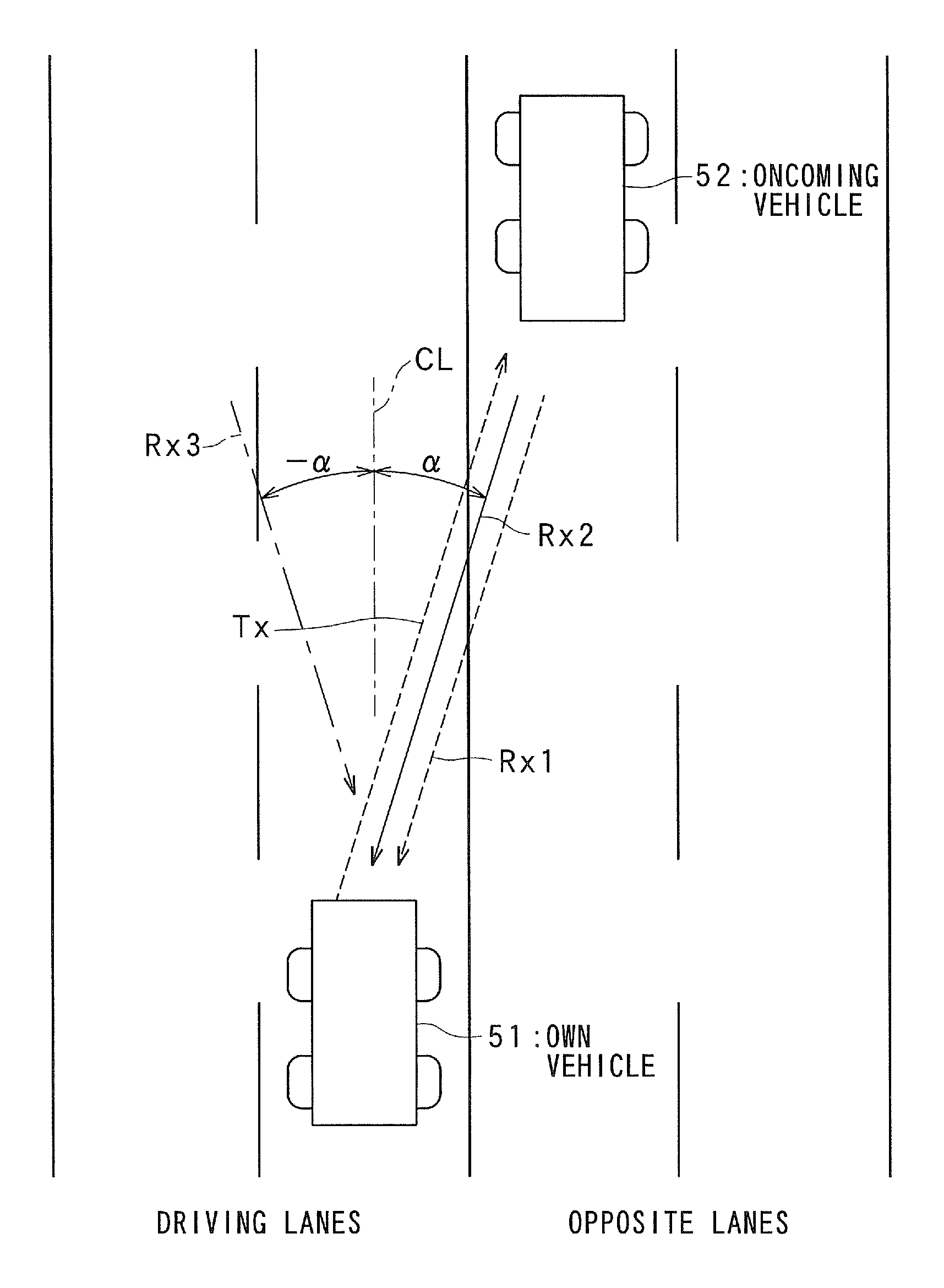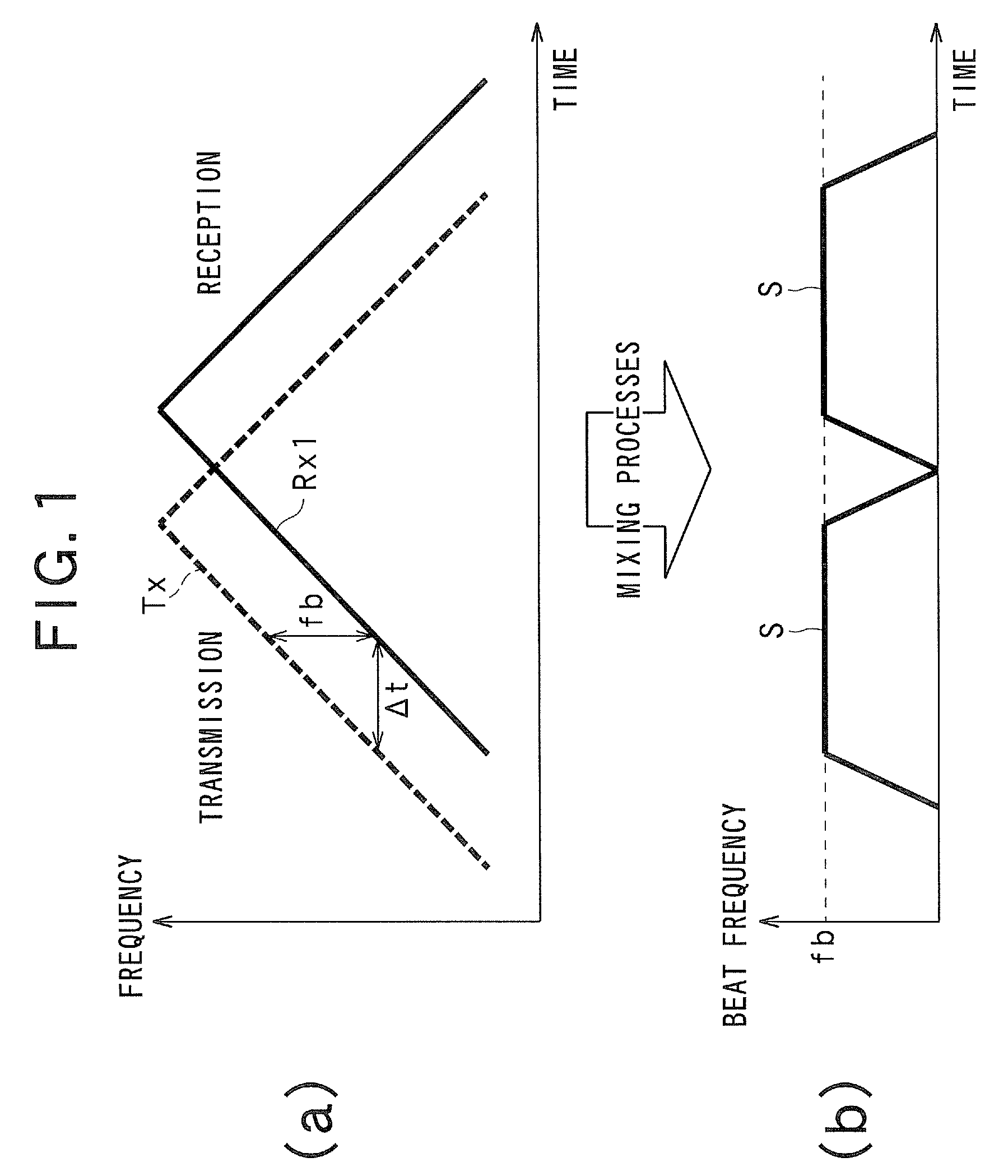Electronically scanned radar system
a radar system and electromagnetic technology, applied in the field of electromagnetic scanning radar system, can solve problems such as deterioration in measurement accuracy, and achieve the effects of suppressing the influence of interference wav
- Summary
- Abstract
- Description
- Claims
- Application Information
AI Technical Summary
Benefits of technology
Problems solved by technology
Method used
Image
Examples
first embodiment
[0063]With reference to the drawings, hereinafter will be described the present invention.
[0064]FIG. 4 is a block diagram illustrating an electronically scanned radar system 1 according to an embodiment of the present invention. The radar system 1 is an FM-CW radar system using a transmission signal Tx which is obtained by applying frequency modulation (FM) to a continuous wave (CW). Also, the radar system 1 is a DBF radar system which performs digital beam forming processes within receiving array antennas 8. The radar system 1 is a so-called on-vehicle radar system loaded on a vehicle, which detects, for example, a distance to a vehicle (target) traveling ahead or a relative speed of the vehicle traveling ahead. The results of the detection of the radar system 1 are utilized, for example, as information for controlling traveling of the vehicle. Microwaves are used as transmission waves,
[0065]The radar system 1 has a transmission / reception section 4 which includes: an oscillator 2 h...
second embodiment
[0103]Referring to FIG. 10, hereinafter is described a
[0104]Since (a) and (b) of FIG. 10 are substantially the same as FIG. 3, the explanation is simplified.
[0105]The second embodiment greatly differs from the above embodiment and modification in that no DBF function is provided. In the second embodiment, removal using the projection matrix, for example, is performed for two intersections between the beat signal S corresponding to the reflected wave Rx1 and the beat signal corresponding to the interference wave Rx2 after being mixing by a mixer. Specifically, both the beat signal S and the beat signal of the interference wave Rx2 are removed from the interference frequency at the intersections mentioned above or during the periods including the intersections, and in all else, only the beat signal of the reference wave Rx2 is removed. More specifically, as shown by (d) of FIG. 10, the intersections mentioned above reside at the time points To4 and To1. Thus, both the beat signal S an...
PUM
 Login to View More
Login to View More Abstract
Description
Claims
Application Information
 Login to View More
Login to View More - R&D
- Intellectual Property
- Life Sciences
- Materials
- Tech Scout
- Unparalleled Data Quality
- Higher Quality Content
- 60% Fewer Hallucinations
Browse by: Latest US Patents, China's latest patents, Technical Efficacy Thesaurus, Application Domain, Technology Topic, Popular Technical Reports.
© 2025 PatSnap. All rights reserved.Legal|Privacy policy|Modern Slavery Act Transparency Statement|Sitemap|About US| Contact US: help@patsnap.com



